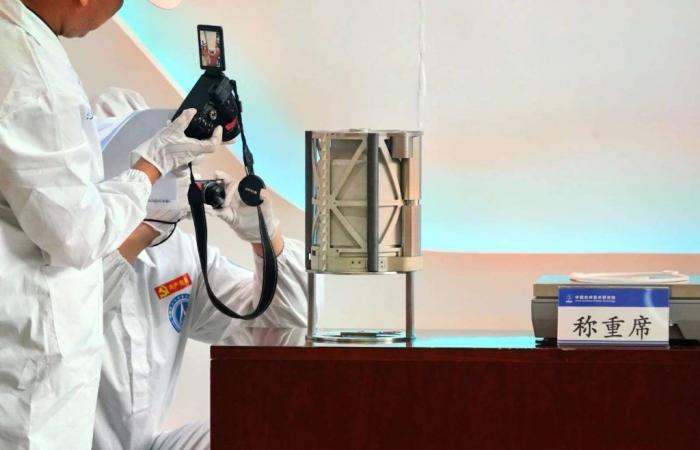Chang’e 6 is a total success! No less than 1,935 grams of samples were collected (out of a target of two kilos) on the lunar surface and also at a depth of one meter using a drill. What answers will these rocks provide?
Moon specialist, Sylvestre Maurice was at the control center in China during surface operations. He is part of the team responsible for the French radon detector Dorn from Irap in partnership with Cnes, CNRS and the University of Toulouse. For him, bringing samples back to Earth is “ the Holy Grail for Planetologists » !
What will China do on the dark side of the Moon?
Futura: 1,935 grams were reported. Is this a new treasure for scientists?
Sylvestre Maurice: 1,935 grams is very good. It’s much better than the Soviet missions [Luna, 1970-1976, NDLRNDLR] which yielded a few hundred grams. From the geochemistry researcher’s point of view, you can make around 1,000 samples with just one gram. So, it’s a lot.
Futura: We were also able to collect samples in depth, but not as many as expected…
Sylvestre Maurice: We couldn’t drill deeper than a meter. I think they were a little disappointed at the command center, but even the astronauts [des missions Apollo] had had a lot of trouble digging deep.
China sets out to conquer the solar system
Futura: France has already received samples of Chang’e 5. Is there a chance of obtaining samples of Chang’e 6?
Sylvestre Maurice: I believe that the Chinese have a philosophy of opening their samples to the community upon call for tender. But we know that it will also happen through diplomatic and cultural channels, as with the rocks of Chang’e 5Chang’e 5 that we received. Since we brought Dorn, we have chances.
Futura: What is the value of these samples compared to others from the visible side of the Moon?
Sylvestre Maurice: There is a kind of confusion between the hidden face and the visible face. Already, the scientific value of the Chang’e 6 samples lies in the fact that they come from a site very far from all the others. But the most interesting thing is that the Chinese brought back samples from the Aitken basin of the South Pole. [bassin d’impact de 2 500 kilomètres de diamètre qui s’étend au-delà du pôle Sud lunaire. Chang’e 6 s’était posée à 46° Sud, donc assez loin du pôle Sud ! NDLR]. It results from the impact with a large object of 200 kilometers in size which caused the surface to take off. A small crustcrust has reformed but it is a unique place in the Solar System because it brings us very close to the coatcoat lunar.
We have a lot of big questions unanswered. We will try to find out if the Late Heavy Bombardment really existed. [période de bombardement des planètes telluriquesplanètes telluriques du Système solaire par des météoritesmétéorites ou des comètescomètes, NDLR]or if it is a bias resulting from the analysis of samples ofApolloApollo. Radon will also be measured in samples to complement the data from the Dorn instrument.
Futura: So this is a unique opportunity to study rocks that could come from the lunar mantle?
Sylvestre Maurice: When a planet cools, the heavy elements migrate towards the gravitational center while the lighter ones form a crust solidsolid on the surface. The elements below find a way back up by changing themselves via the volcanismvolcanism on Earth as on the Moon. But as a first approximation, a planet hides its internal structure from us. That’s why we like seismometersseismometers. But it’s not easy to study the chemical composition of a planet’s interior, so we hope that nature has brought some up here and there. It’s likely to find some in the Aitken Basin, but we don’t know what to expect from the Chang’e 6 samples.
France sets out to search for uranium on the Moon
Sylvestre Maurice: These samples are interesting but not revolutionary because we are only one meter underground at best. They were buried by what we call natural gardening, where one small impact covers another, etc. Overall, a meter of depth dates back a billion years. But there are lots of interesting things, on measurements of thermal conductivitythermal conductivity For example. So, business to follow.
Futura: Regarding Dorn, did all the measurements go well?
Sylvestre Maurice: The data is there. The Chinese have been very reagentsreagents and they oriented the lander so that Dorn was in permanent shade for the 49 hours on site. It’s amazing because they showed their attitude control. We format the data and check the instrument parameters. Dorn worked, but it will take us some time to analyze.






